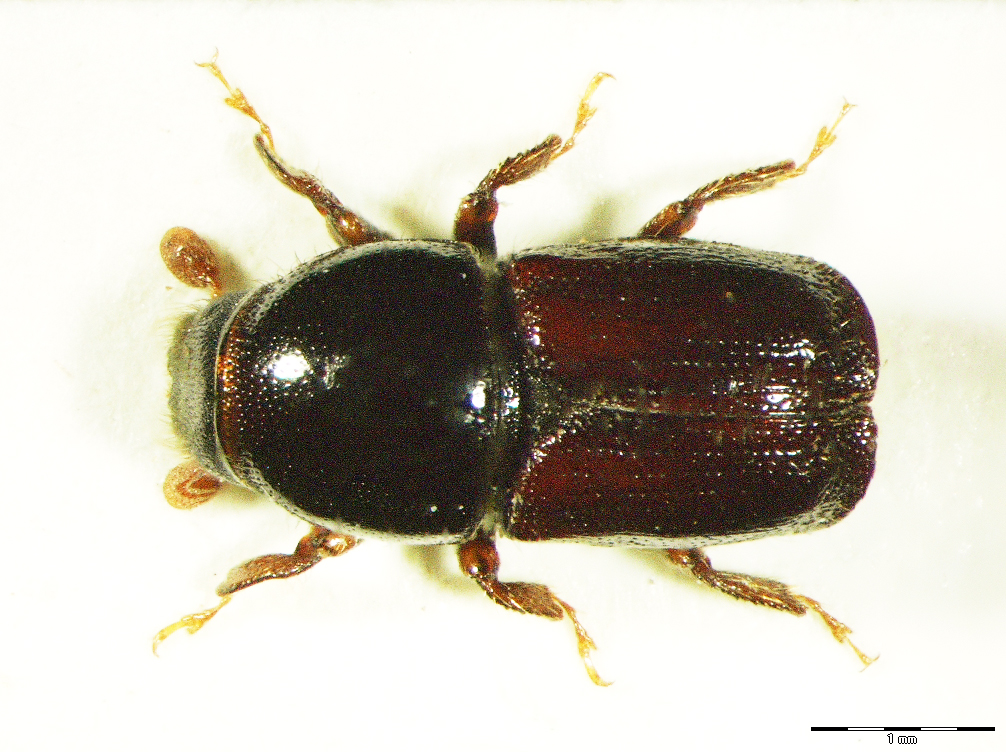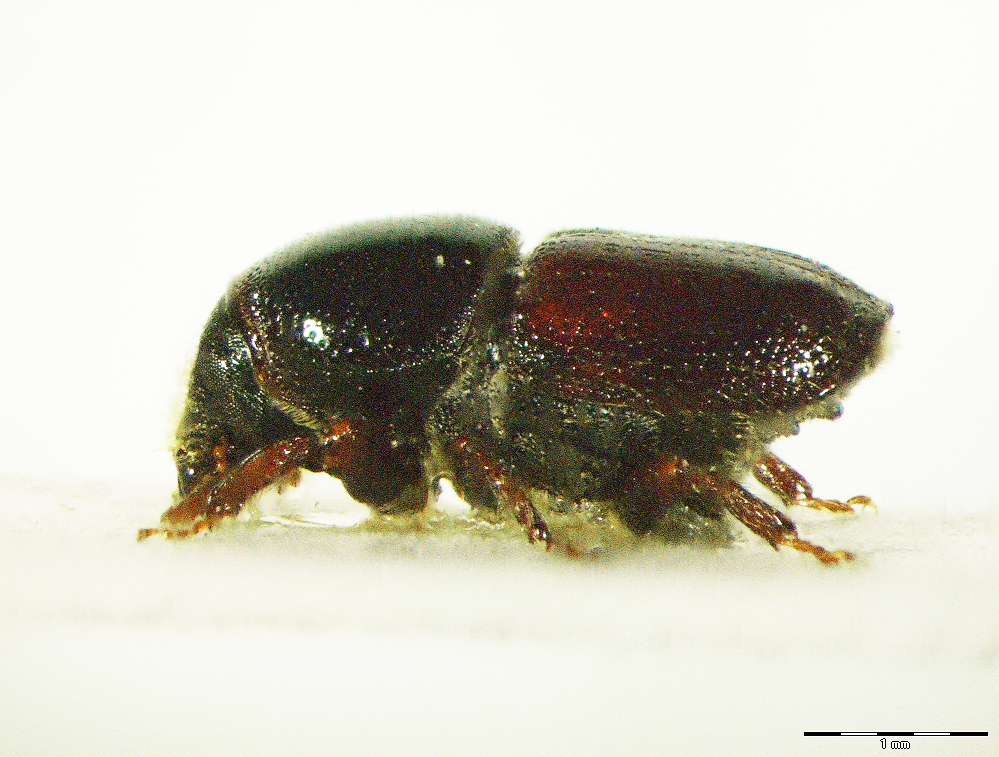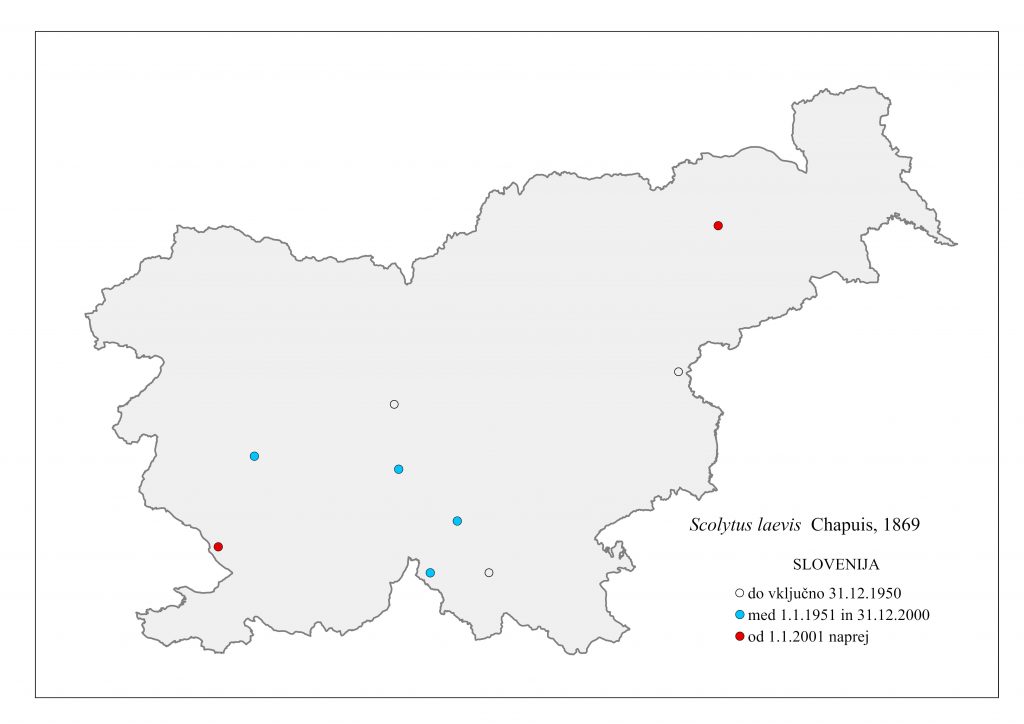32.03. Scolytus laevis (Chapuis, 1869)
Presence
E: AU BU BY CR CT CZ DE EN FR GB GE GG GR HU IT LA LS NR NT PL SK SL SP ST SV SZ UK YU »Caucasus«
Figure 153: Scolytus laevis, dorsal, lateral (Photo: Maja Jurc)
Older catalogs and keys – citations of name
Grüne 1979: Scolytus laevis Chapuis, 1869; Freude, Harde, Lohse 1981: Scolytus laevis Chapuis; Titovšek 1988: S. laevis Chapuis; Pfeffer & Knížek 1993: S. laevis Chapuis, 1869; Pfeffer 1995: S. laevis Chapuis, 1869.
Figure 154: Scolytus laevis, distribution map according to historical and recent data
Ecology and presence in Slovenia
The species is present in Central Europe, the Balkans, southern Scandinavia, Russia, Ukraine and the Caucasus. It is uncommon in Slovenia and absent in the NE of the country (Figure 154). Hosts are mainly Ulmus carpinifolia, Ulmus hollandica, U. laevis and U. elliptica, occasionally Quercus robur, Tilia cordata, Alnus glutinosa, Pyrus spp. and Malus spp.. Hosts are mostly absent from sites in Slovenia, with the exception of Ulmus glabra and Ostrya carpinifolia. Monogamous species. The maternal tunnel system is longitudinal, the length of the maternal galleries is 5-6 cm. Inhabits trunks and thicker branches. Imago length is 3.0-4.5 mm. The second sternite has no denticles, only a small protuberance (Figure 153). It is not a particularly aggressive species, occurring more frequently only in weakened stands. Like all elm bark beetles, it transmits Dutch elm disease (Ophiostoma ulmi and O. novo-ulmi).



